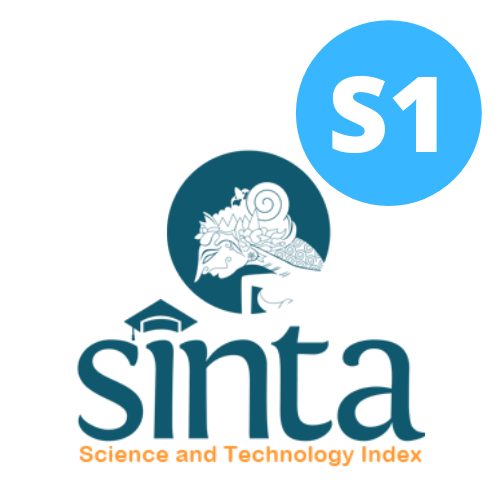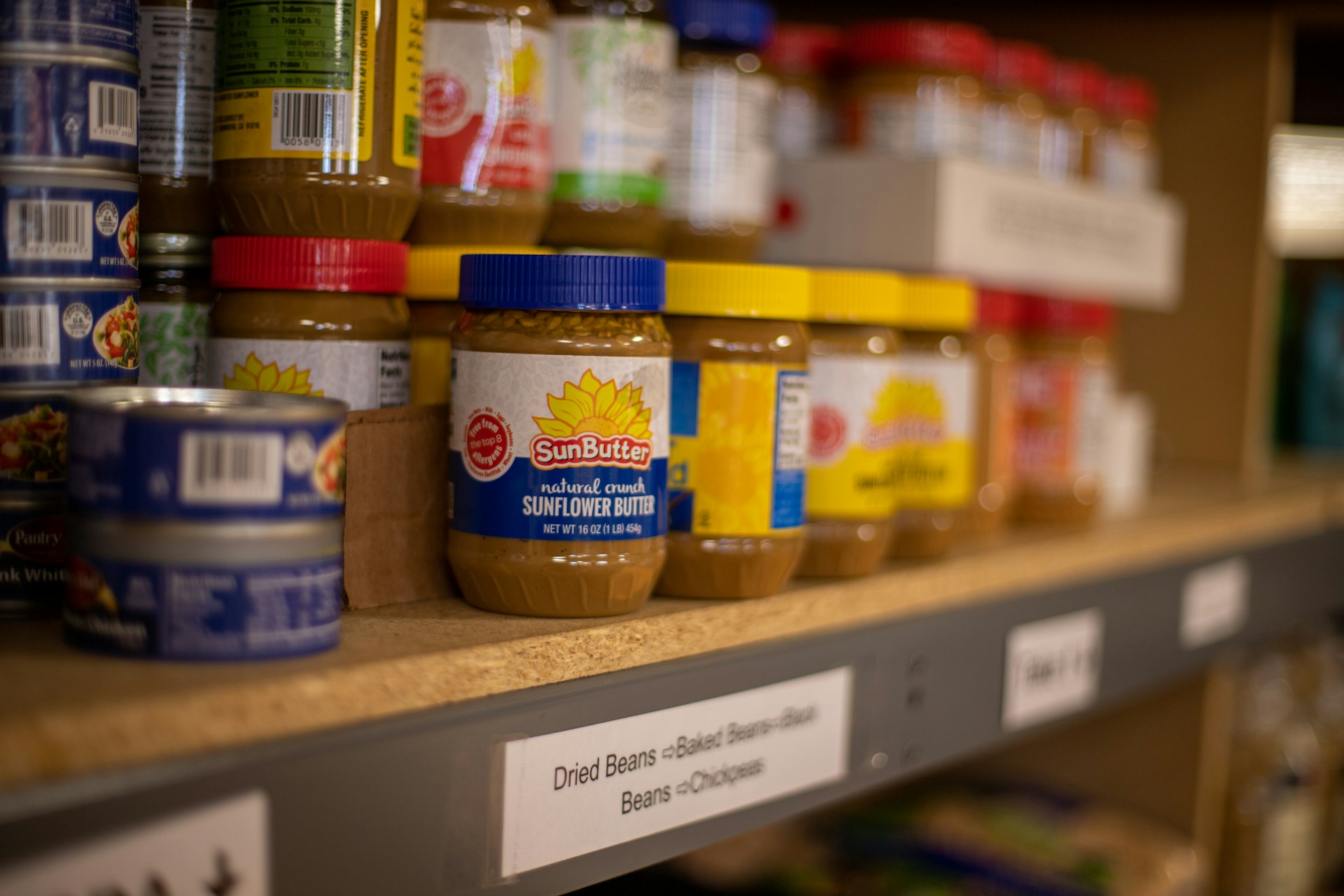The Correlation of Sugar, Salt and Oil Consumption Patterns with Central Obesity in Government Employees at the Regional Library and Archives Service Office of Bengkulu Province
Hubungan Pola Konsumsi Gula, Garam dan Minyak Dengan Obesitas Sentral Pada Pegawai Pemerintah di Kantor Dinas Perpustakaan dan Kearsipan Daerah Provinsi Bengkulu

Downloads
Background: Central obesity manifests as the accumulation of adipose tissue in abdominal (visceral). The assessment of this condition often employs abdominal circumference (AC) as a commonly utilized metric. The increasing prevalence of central obesity is linked to dietary habits encompassing simple carbohydrates, fiber, and protein, environment, behavior, and genetic factors.
Objectives: This study aimed to determine the relationship between sugar, salt, and oil consumption patterns and central obesity in employees.
Methods: This research was an observational study with a cross-sectional design on 35 employees. Data collection included sugar, salt, and oil consumption patterns collected using a semi-quantitative food frequency questionnaire (SQ-FFQ), and central obesity was obtained by measuring abdominal circumference using measuring tape, then statistical analysis using the Chi-square test.
Results: Most respondents had unhealthy consumption patterns of sugar, salt, and oil that were 71.4%, 62.9%, and 82.9%, respectively. There was a significant relationship between consumption patterns of sugar (p=0.002), salt (p=0.033), oil (p=0.019) and the proportion of central obesity in employees at the Regional Library and Archives Office of Bengkulu Province.
Conclusions: Twenty-two employees experienced central obesity, with the majority surpassing daily sugar, salt, and oil intake recommendations as a notable risk factor. To mitigate this, Bengkulu Province Regional Library and Archives Office staff are advised to limit the consumption of sugar, salt, and oil-rich items such as salted fish, canned sardines, dried shrimp, instant chili sauce, soy sauce, instant noodles, palm oil, and coconut milk in their meals.
Pakaya R, Badu FD, Maliki LI. Hubungan Aktivitas Fisik Dan Pola Konsumsi Terhadap Insiden Obesitas Sentral. J Olahraga dan Kesehat Indones. 1, 68–74 (2020).
Djokosujono FKPK, Siti Khodijah Parinduri. Faktor-Faktor Dominan Obesitas Sentral Pada Usia 40-60 Tahun Di Indonesia (Analisis Data Indonesian Family Life Survey 5 Tahun 2014/2015). Kesehat Masy. 9, 58 (2021).
Septiyanti S. Obesitas dan Obesitas Sentral Pada Masyarakat Usia Dewasa di Daerah Perkotaan Indonesia. J Ilm Kesehat [Internet]. 2, 118–27 (2020).
Putri RN, Nugraheni SA, Pradigdo SF. Faktor-faktor Yang Berhubungan Dengan Kejadian Obesitas Pada Remaja Umur 13–15 tahun di Indonesia (analisis Lanjut Data Riskesdas 2018). Media Kesehat Masy Indones. 6, 43 (2022).
Vera T., Tando NM. Aktivitas Fisik dan Pola Makan dengan Obesitas Sentral pada Tokoh Agama di kota Manado. Gizi Indones [Internet]. 4, 289–98 (2012).
Sari NS. Karbohidrat. J ilmu Keolahragaan. 13, 38–44 (2014).
Ajeng Putri Rahmandita MA. Perbedaan Tingkat Konsumsi dan Aktivitas Fisik pada Wanita (20-54 Tahun) Obesitas Sentral dan Non Sentral The Differences in Consumption Level and Physical Activity among Women ( 20-54 Years ) with Central and Non-Central Obesity. Amerta Nutr. 1, 266–74 (2017).
Atmarita, Jahari, B A, Sudikno, Sudikno, et al. Asupan Gula, Garam, dan Lemak: Analisis Survei Konsumsi Makanan Individu (SKMI) 2014. Gizi Indonesia. 39, 1 (2016).
Marina Dwina Adwinda, Mia Srimiati. Hubungan Lingkar Perut, Konsumsi Gula dan Lemak dengan Kadar Glukosa Darah Pegawai Direktorat Poltekkes Kemenkes Jakarta II. Nutrire Diaita, 11 (2019).
Riskesdas Nasional 2018. Laporan Nasional Riskesdas 2018. In: Lembaga Penerbit Balitbangkes. 1–674 (2018).
Putra MM, Saraswati NNI, Raningsih NM. Pola Hidup Dengan Kejadian Obesitas: Literature Review. J Ilmu Keperawatan Med Bedah. 5, 15–35 (2022).
Vasiljevic I, Gardasevic J, Kezunovic M, Bojanic D. Waist Circumference as an Indicator Abdominal Obesity in Middle Age. Sport Mont. 15, 21–2 (2017).
Herlina Jusuf , Sitti Rahma ERM. Evaluate The fPSA for Discriminate Between Prostate Cancer patients (pca) and Benign Prostatic Hyperplasia (BPH) Depending On Psa fucosylation by Using Nano-lectin Immunoassay. Syst Rev Pharm. 11, 440 (2020).
Wuni R, Nathania EA, Ayyappa AK, Lakshmipriya N, Ramya K, Gayathri R, et al. Impact of Lipid Genetic Risk Score and Saturated Fatty Acid Intake on Central Obesity in an Asian Indian Population. Nutrients. 14, 1–14 (2022).
Wa Ode Nurali1, Tasnim2 S. Hubungan Asupan Karbohidrat Dan Lemak Dengan Obesitas Sentral Pada Karyaan Instansi Di Kota Kendari. J Gizi Ilmu. 5, 49–58 (2018).
Arizal H, Januarsa A, Fadhila E. Perancangan Motion Graphic Dalam Membatasi Konsumsi Gula, Garam Dan Lemak Bagi Dewasa Muda. J Rekamana Inst Teknol Nas. 2, 1–15 (2018).
Calcaterra V, Cena H, Magenes VC, Vincenti A, Comola G, Beretta A, et al. Sugar-Sweetened Beverages and Metabolic Risk in Children and Adolescents with Obesity: A Narrative Review. Nutrients. 15, 1–19 (2023).
Riseberg E, Tamez M, Tucker KL, Rodriguez Orengo JF, Mattei J. Associations between diet quality scores and central obesity among adults in Puerto Rico. J Hum Nutr Diet. 34, 1014 (2021).
Wong MCS, Huang J, Wang J, Chan PSF, Lok V, Chen X, et al. Global, regional and time-trend prevalence of central obesity: a systematic review and meta-analysis of 13.2 million subjects. Eur J Epidemiol. 35, 673–83 (2020).
Lee J, Hwang Y, Kim K, Ahn C, Sung HK, Ko K. Asosiasi kadar natrium urin dengan kelebihan berat badan dan obesitas sentral pada populasi dengan asupan natrium. BMC. 4, 1–14 (2018).
Zhou L, Stamler J, Chan Q, Van Horn L, Daviglus ML, Dyer AR, et al. Salt Intake and Prevalence of Overweight/Obesity in Japan, China, the United Kingdom, and the United States. Am J Clin Nutr. 110, 34–40 (2019).
Andres-Hernando A, Cicerchi C, Kuwabara M, Orlicky DJ, Sanchez-Lozada LG, Nakagawa T, et al. Umami-induced obesity and metabolic syndrome is mediated by nucleotide degradation and uric acid generation. Nat Metab. 3, 1189–201 (2021).
Sari SP, Yuliati E, Metty, Damayanti S, Shayida H. Gambaran Pola Konsumsi Minyak Goreng Pada Rumah Tangga. Pros Semin Nas. 4, 131–8 (2022).
Suhaema, Masthalina H. Pola Konsumsi dengan Terjadinya Sindrom Metabolik di Indonesia. J Kesehat Masy Nas. 9, 340 (2015).
Nuri Andarwulan, Siti Madanijah, Dodik Briawan, Khoirul Anwar, Atikah Bararah, Saraswati and Dominika ´Srednicka-Tober. Food Consumption Pattern and the Intake of Sugar, Salt,and Fat in the South Jakarta City”Indonesia. Nutrients. 13, 1289 (2021).
Rahayu I, Hadju V, Thaha RM. Correlation between life style and dyslipidemia with impaired fasting blood sugar in state junior high school and state senior high school having central obesity. ACM Int Conf Proceeding Ser. 78–82 (2018).
Copyright (c) 2024 Amerta Nutrition

This work is licensed under a Creative Commons Attribution-ShareAlike 4.0 International License.
AMERTA NUTR by Unair is licensed under a Creative Commons Attribution-ShareAlike 4.0 International License.
1. The journal allows the author to hold the copyright of the article without restrictions.
2. The journal allows the author(s) to retain publishing rights without restrictions
3. The legal formal aspect of journal publication accessibility refers to Creative Commons Attribution Share-Alike (CC BY-SA).
4. The Creative Commons Attribution Share-Alike (CC BY-SA) license allows re-distribution and re-use of a licensed work on the conditions that the creator is appropriately credited and that any derivative work is made available under "the same, similar or a compatible license”. Other than the conditions mentioned above, the editorial board is not responsible for copyright violation.












































